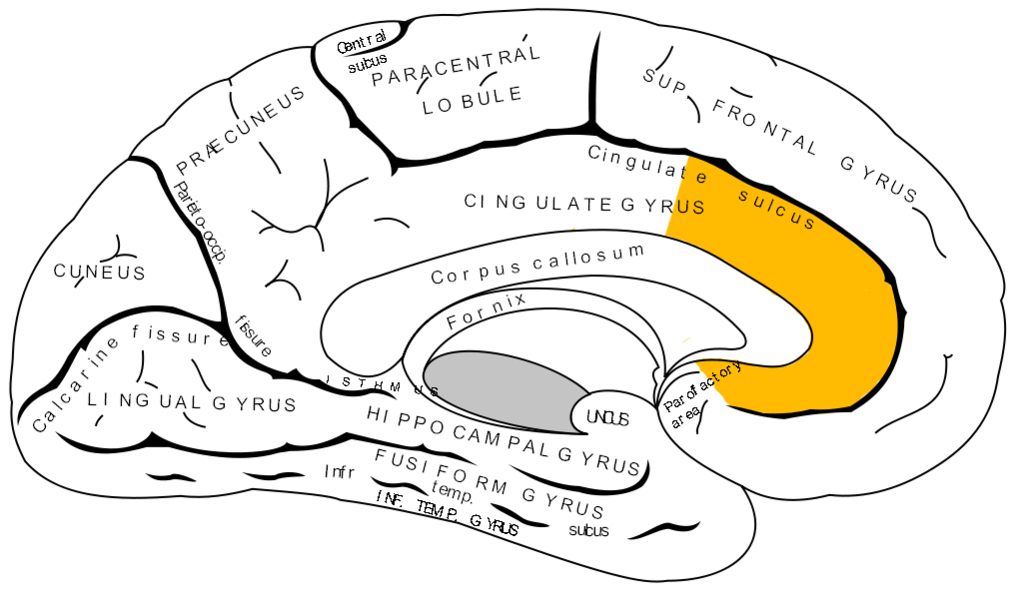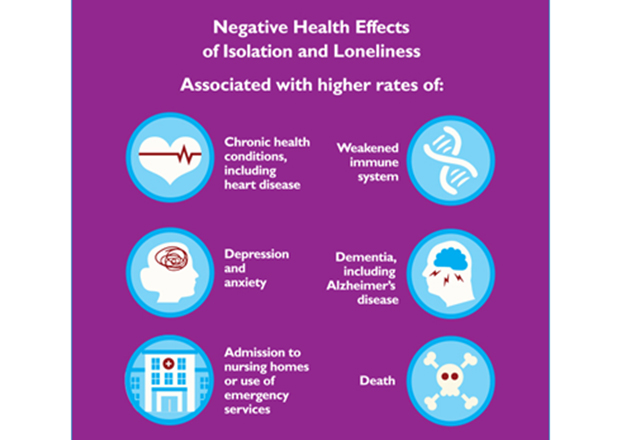Why are we drawn to social connections and what happens when they fall apart?
During a time of mandatory social distancing, it is inevitable that some should feel isolated. Preventing the spread of COVID-19 and staying healthy are of the utmost importance right now, but stopping social connections and being in isolation can also damage our physical and mental health.
Humans are a social species due to the evolutionary advantage of relationships. They provide protection and reproduction: two key elements for a species to survive. As a result, humans experience a pain response from loneliness (2). In one study, patients’ brains were scanned during a social test where some were excluded and others included. The brains of the excluded had high neural activity in the dorsal anterior cingulate cortex (dACC). Responsible for memory, the processing and formation of emotions, and learning, the ACC is located in the front portion of the brain’s cingulate cortex. The dorsal or upper back portion of the ACC detects and responds to threats and is associated with the emotional part of pain responses. Scientists believe that humans have this pain signal during isolation in order to encourage social connections (2).

Physical isolation can lead to loneliness, which occurs when humans are unsatisfied with their relationships (1). Surprisingly, it is as damaging as smoking, obesity, and high blood pressure (2). Loneliness is linked to sleep issues, depression, cardiovascular issues, a 30% higher risk of stroke, and a 40% higher risk of dementia (1). Through testing gene expression in leukocytes––white blood cells that fight infection––scientists have discovered that loneliness can also result in poor immunity (1). In the experiment, lonely people had higher responses in the genes responsible for inflammations and limited antiviral responses compared to a standard subject (1). As a result, lonely people have a higher risk of disease and death (2). In 1945, a study led by psychoanalyst Rene Spitz discovered extremely high mortality rates at orphanages with limited human contact (3). This led to beneficial changes in the child care system. Through the compilation of over 100 studies conducted on loneliness, data reveals that people with good social relationships have a 50% higher chance of survival, further proving the importance of relationships in human life (3).
With more than a quarter of the population living alone, maintaining healthy connections is important for our mental health (1). Although combating loneliness varies from person to person, one method that has proven to work the best in children and adults is cognitive behavioral therapy (CBT) (1). In CBT, with the help of a therapist, patients attempt to deal and process negative emotions that can be the cause of loneliness. Not everyone has access to therapy, but taking some time to think about what may be the root of our feelings, whether it be physical isolation or some other factor, is extremely beneficial. Other methods to combat loneliness, especially during isolation, include becoming more content with self-company. Activities such as meditating, reading, and writing in a journal can help combat loneliness. Another study found that especially for elders, social activities reduce loneliness and lower the risk of death (1).

During this pandemic, living a normal life is difficult without social gatherings, but this time can be utilized to get in touch with ourselves, find a new hobby, or reach out to family and friends. Though it may be difficult to maintain social connections in this climate, they are an important part of being human.
– Nanako Ruping
References
- Novotney, A. (2019, May). The risks of social isolation. Retrieved April 16, 2020, from https://www.apa.org/monitor/2019/05/ce-corner-isolation
- Cacioppo, J. T., Hawkley, L. C., Norman, G. J., & Berntson, G. G. (2011, August). Social isolation. Retrieved April 16, 2020, from https://www.ncbi.nlm.nih.gov/pmc/articles/PMC3166409/
- Holt-Lunstad, J., Smith, T. B., & Layton, J. B. (2010, July 27). Social Relationships and Mortality Risk: A Meta-analytic Review. Retrieved April 16, 2020, from https://journals.plos.org/plosmedicine/article?id=10.1371/journal.pmed.1000316#s4
Images
